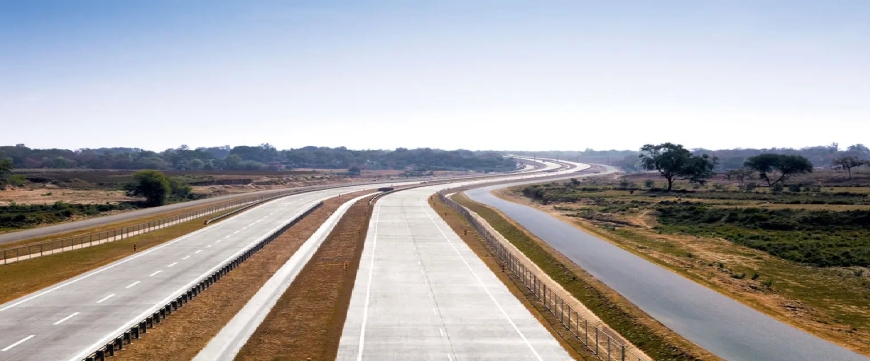We have a positive outlook towards the Indian roads and highways sector.
- Santosh Rai Operations Director & Chief Business Officer, HCC What is your view on the government plans to expand the highway network by 25,000 km in 2022-23 as per the Union Budget 2022? What opportunities and challenges do you foresee in achieving this target? This seems to be an

Santosh Rai
Operations Director & Chief Business Officer, HCC
What is your view on the government plans to expand the highway network by 25,000 km in 2022-23 as per the Union Budget 2022? What opportunities and challenges do you foresee in achieving this target?
This seems to be an optimistic target because adding 25,000 km means the Ministry of Road Transport and Highways (MoRTH) has to build ~70 km of roads per day, which is significantly higher than the anticipated 40 km per day set for 2021-22.
The actual highway construction by MoRTH during 2021-22 was 10,457 km (~29 km per day), impacted by pandemic-related disruptions and a longer-than-usual monsoon season in some parts of the country.
FY 22-23 has begun on a relatively subdued note with a decline in road construction and new awards compared to the previous fiscal year. As per MoRTH data, 1,307 km of roads had been constructed till May 2022, compared to 1,407 km in the same period last fiscal. Awards till May 2022 are also down with 697 km compared to 974 km in the same period last fiscal year. This puts further pressure on the remaining months to achieve the ambitious target of 25,000 km. At the same time, it would mean plenty of opportunities for the companies engaged in the sector.
The Government will mobilize Rs 20,000 crore for this national highway expansion. How far will this help the developers and contractors in the project execution and completion of the project in time?
The timely release of payments by the Authority is a prerequisite for the industry to flourish. Unfortunately, the construction sector has been marked by payment delays due to non-decision making by authorities and everything ending up in Arbitration & Courts. This impacts the cash flows and ultimately the health of the sector - thereby impacting the timely completion of projects. Additionally, for the developers and contractors to complete projects in time, projects should not be awarded unless ~90 per cent encumbrance-free land, forest, and environmental approvals are in place.
What is the scenario of project funding for roads & highways? What is the support from government and private agencies?
The key challenges being faced are:
- No long-term finance avenues. Only Scheduled Commercial Banks are currently funding where they have a limited 10 to 15-year horizon. Other sources are not cost-effective.
- The lenders and the financial institutions don't have the technical capacity or suitable diligence mechanism to appraise the execution-related risks of the project. Hence, they are unwilling to do non-recourse financing, thereby seeking sponsor support (undertakings, corporate guarantee, promoter guarantee, etc), making the project less attractive.
- High funding cost
- Significant time lost in lenders' approvals (sanctions, rate resets, change in ownership approvals, cost overrun approvals).
Thus, access to long-term debt from financial institutions like insurance, pension, provident fund companies, etc., should be allowed. Additionally, expansion of bond markets to invest in infrastructure should also be allowed.
It is also suggested that there should be a technical capacity expansion with the banks/financial institutions so that they can evaluate the risks on a timely basis and provide non-recourse financing (after conducting their Due Diligence) supported by clear payment terms by Authority.
Land acquisition is still a major challenge in roads & highway developments in the country. How do you look at this in the project execution?
Land acquisition-related delays have a double cost impact due to an increase in Capex and an increase in the cost of funds (associated with equity and debt) which further leads to NPAs in the banking sector. Therefore, it is highly recommended that projects should not be awarded unless ~90 per cent encumbrance-free land is available and forest & environment approvals are in place.
What kind of digital and new-age technologies is gaining traction in road construction?
With ambitious road construction targets set out by the Government, it is imperative to adopt and encourage technology and policies especially related to the speed of construction. MoRTH has recently introduced a 'Precast Concrete Policy' in which a minimum of 25 per cent of concrete requirements should be used from factory-manufactured pre-cast elements. In addition to fast construction, this would bring aesthetic uniformity and reduce pollution at construction sites.
What is your outlook on the Indian roads & highways sector? What could be the major trends to look for in future?
We have a positive outlook towards the Indian roads and highways sector. In 2022-23, the MoRTH has allocated nearly Rs 2 lakh crore, and of this, the highest is towards NHAI at Rs 1,34,015 crore. Of the budgeted amount, 75 per cent (Rs 1,00,100 crore) will be provided from the Central Road and Infrastructure Fund, 15 per cent (Rs 20,000 crore) will come from the monetization of the National Highways, and the remaining 10 per cent (Rs 13,915 crore) will be provided from the Permanent Bridge Fees Fund. The monetization of the National Highways seems better placed on account of a sharp improvement in toll collection at toll plazas, driven by higher radio frequency identification (RFID), which has reached around 97 per cent level. In addition, an improvement in transparency lends comfort to NHAI in monetizing such road stretches.
Also, major initiatives of the Ministry such as PM GatiShakti, Bharatmala Pariyojana, Multimodal Logistics Parks, National Highway connectivity for ports and Pradhan Mantri Gram Sadak Yojana augur well for the sector.
Hits: 0







